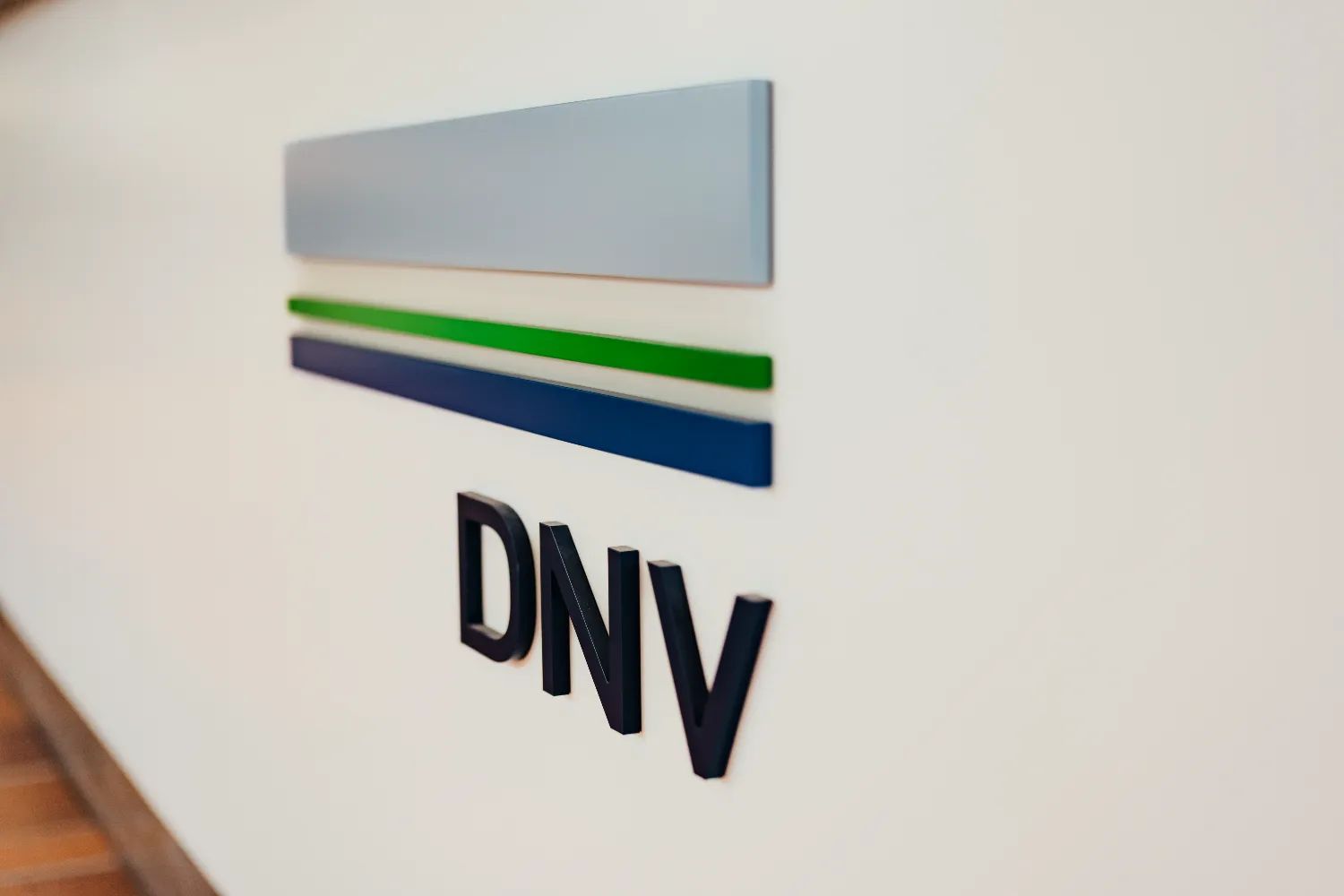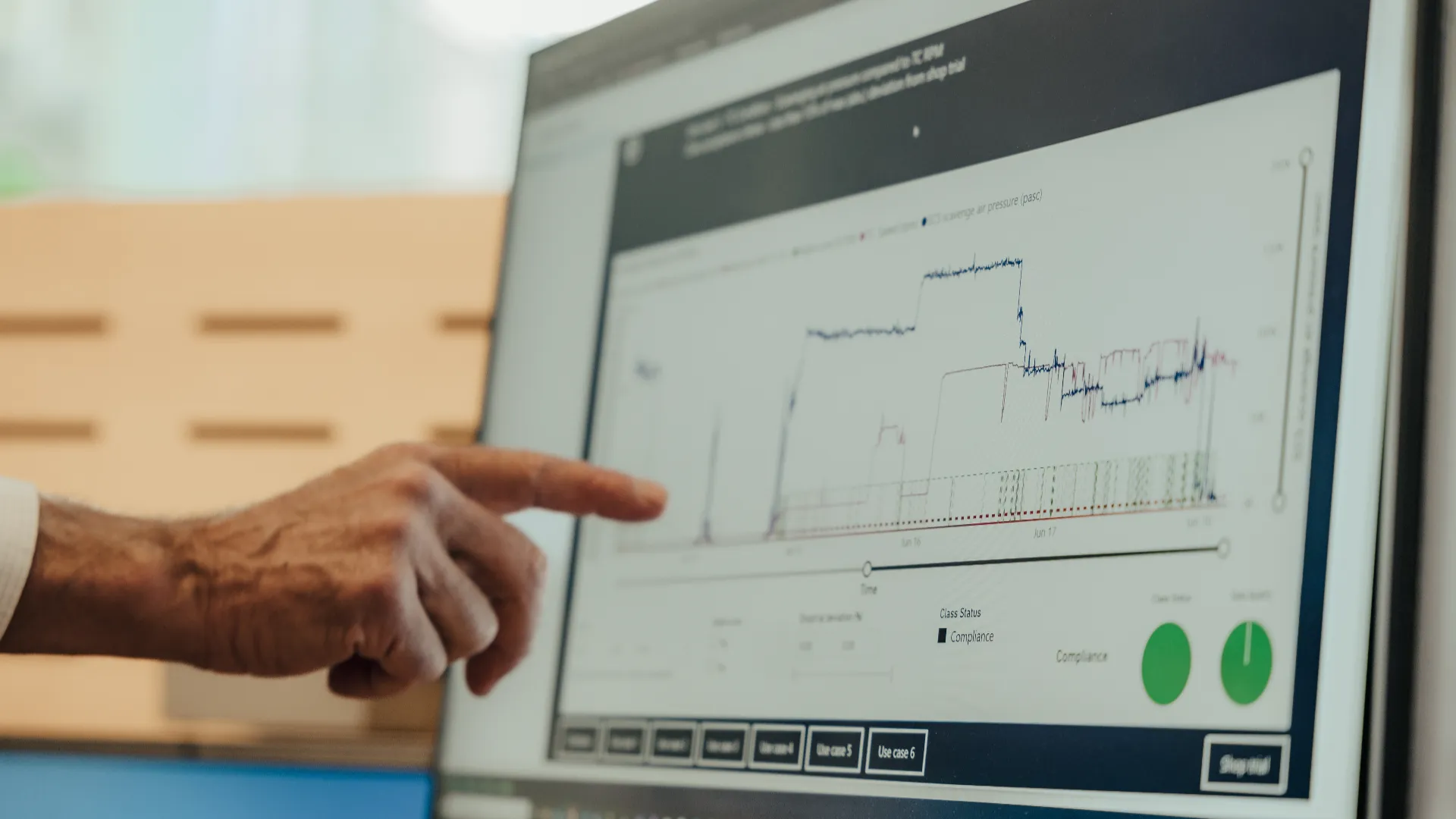By loading the video you agree to YouTube's privacy policy.
In order for a ship to be cleared for international shipping, it must have a certificate, issued by a certified classification society, such as DNV to be permitted to trade. DNV is one of the most prestigious, but also most progressive classification societies in the world, and they are well aware of the responsibility that comes with it.
“Trust is absolutely crucial for us as a classification society,” says DNV’s Global Business Development Director Jon Rysst. “We need to maintain the trust we have earned since our founding in 1864. At the same time, we need to develop new ways of working when technology offers better ways of doing things.” By that, he means taking advantage of big data digital solutions for ship engines to create maritime shipping’s remote survey of the future.

“With the knowledge that the Everllence digital transfers give us, we can spend more time and effort where it is needed.”
Jon Rysst, Global Business Development Director, DNV Maritime
The benefits of digital remote surveys
Classification societies such as DNV provide surveys and inspections that determine a ship’s structural integrity, the condition of its equipment and systems, as well as its adherance to maritime rules and standards. Traditionally, surveyors must travel to the vessel to complete an inspection, however, DNV has developed remote vessel assurance and marine surveys to support ships anywhere in the world, including survey for ship engines.
“The main benefit of remote surveys of ship engines is, of course, that we can continuously monitor the condition of all parts of the engine,” says Jon Rysst. This will lead to a potentially safer, more transparent and sustainable shipping industry, he is convinced, and will make inspections more efficient and focused for the classification society. Vessels no longer need to be tied up in a shipyard for five days during an inspection and owners will get more use out of their ships.
For Everllence, the benefits of remote monitoring are clear: better control of engine performance and a more efficient service for customers, which gives it a competitive edge as an engine supplier.

"The collaboration between Everllence and DNV will revolutionize current approaches to on-site surveys,” says Gregory Puckett, Chief Digital Officer at Everllence. “By leveraging digital data, domain knowledge and classification competency, we’ve jointly optimized the survey process, making it far more efficient than traditional onboard surveys. This secure and innovative use of data not only saves time but can also significantly reduce costs for our customers."
Trust and mutual interest
In 2020, DNV decided to develop as an organization and service provider by making extensive use of digital technology and by providing digital services. “We started the pilot project together with Everllence in 2021. At the beginning, as always, we had to build a solid trust between us. We quickly came to the conclusion that we can make both companies better by working together, using the same data generated by the sensors in the ship’s engines.”
Once this trust and mutual interest had been established, integrating engine data turned out to be far easier than expected. Everllence Data+, a cloud-based API platform, delivers the data in standardized data structures that DNV transmits onto their own platform. DNV algorithms then transform the data into the information needed to determine the status of the Everllence B&W two-stroke engine on board a ship.

“All data will be transferred and stored securely between us and Everllence. That’s a promise.”
Jon Rysst, Global Business Development Director, DNV Maritime
“Working in this way means that when we do an annual inspection, we have a clear idea of where exactly in the vessel’s engine we might need to take a closer look,” says Jon Rysst. Without digital and remote surveys, an annual inspection typically takes a long day with little or no knowledge of where to probe deeper. “With the knowledge that the Everllence digital transfers give us, we can spend the time and effort where it is needed. Of course, we still have to go on board because there are things that we can identify better by ‘looking and feeling’ than with digital data alone.”
Data security is fundamental
Moving data often raises the issue of data security. Data should only be accessible to those with the appropriate clearance. Has this ever been an issue in the Everllence/DNV project? “Not really,” says Jon Rysst. “This is a part of the ‘need for trust’ I talked about earlier.”

DNV has used a lot of data transfer and IT solutions before this project, he explains, so there are established technologies and routines in place to ensure beyond doubt that all data handled can only be used by authorized parties. “We have a lot of data in our computer systems at DNV that even we can’t see or use ourselves, simply because the data provider hasn’t approved it. All data will be transferred and stored securely between us and Everllence,” and he adds: “That’s a promise.”
The Everllence/DNV pilot is moving forward towards an industrial implementation. “DNV and Everllence started discussions and planning for this project in 2021,” says Jon Rysst. “In 2022, we tested our ideas using what you might call a ‘laboratory engine’. So far, we have achieved our goals. Today we are talking to shipping companies about using their engines to test the digital remote survey technology under industrial conditions. Discussions are ongoing and look promising.”

“By the time we are fully digital, I think it will be well into the 2030’s.”
Jon Rysst, Global Business Development Director, DNV Maritime
Digitalization in the shipping industry is coming
The collaboration with DNV has so far been very successful and bodes well for the future. In addition, Everllence is also implementing the remote survey technology with other major classification societies, such as the American Bureau of Shipping and Lloyd’s Register. So no matter which classification society a shipping company is certified by, the digital technology is coming.
Earlier in the interview, Jon Rysst mentioned that the data transfer between Everllence and DNV turned out to be easier to solve than expected. But as the ambitions grow, so does the complexity. “At DNV, we consider ten systems to be critical for a large vessel,” says Rysst. These include the engine, of course, but also, for example, the navigation equipment, the powertrain and the steering. For DNV, the integration of other types of engines and other partner companies and suppliers adds to the complexity of the task. “By the time we are fully digital and can remotely control all of the ten critical systems, I think it will be well into the 2030’s”.
About the author
Nils Lindstrand is a business and technology writer based in Stockholm, Sweden. His work has been published in a number of Swedish and international magazines.
